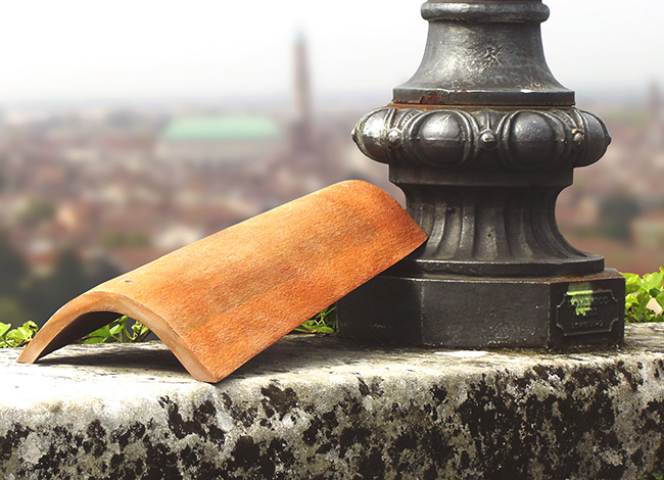Invisible Solar: a photovoltaic clay roof tile

While installing solar panels onto modern buildings is easy, it’s almost impossible or even forbidden to install them on historic sites or in cities with protected cultural heritage. To provide a solution that would allow such sites to benefit from the latest technology, Dyaqua began developing Invisible Solar, a photovoltaic system that looks just like traditional clay roof tiles.
Achieving a balance between protecting cultural heritage and respecting the environment
Since it’s impossible to integrate solar cells into clay, Dyaqua has replaced this traditional material with a composite: a mixture of recycled plastics tinted during manufacturing to achieve the desired visual appearance. Opaque to the human eye, this polymer layer filters the sunlight, feeding the small monocrystalline solar cells encapsulated within the small module. When laid together, these innovative tiles form a solar roof that transforms the sun’s rays into electricity using photovoltaic technology, just like traditional solar panels.
Easy to install, they’re laid just like their conventional counterparts, and they’re stronger than slate or clay tiles. In addition to being discreet and visually appealing, they have good insulating properties—an essential feature for avoiding thermal bridges and creating energy-efficient buildings.
Of course, there’s always a drawback. With Invisible Solar tiles, the downside is that their energy yield is currently lower than traditional solar panels. An area of about thirty square metres can generate one kilowatt hour of electricity. Therefore, these solar tiles must be installed across a larger surface area to produce the same amount of electricity as solar panels. To tackle this relative inefficiency, Dyaqua is currently developing a method to embed monocrystalline solar cells in other materials such as stone, concrete and wood. This way, solar energy wouldn’t just be generated by the roof, but by the building’s entire structure.
An innovative solution for harnessing solar energy at historic and protected sites
On top of the interest from homeowners in listed areas, Invisible Solar is proving to be an interesting technological development for the sustainable redevelopment of historical sites. Invisible Solar tiles have been installed in the Pompeii Archaeological Park since 2018. The objective is “to make Pompeii the first smart archaeological park, creating an international reference model for other cultural heritage sites." According to the park’s director, the tiles look "just like the terracotta tiles used by the Romans."
Approved by the Italian Ministry of Culture, these Invisible Solar tiles will soon be installed on the Maxxi, Rome’s famous museum of contemporary art. In the coming months, a more extensive installation will be carried out in Évora, Portugal. This is part of an EU-funded project to help historical cities “become greener, smarter and more liveable while respecting their cultural heritage.” They’re also planned to cover the roofs of some public buildings in Split, Croatia, as well as other historic buildings throughout Europe (Bari in Italy, Ioannina in Greece, Grenada in Spain, Celje in Slovenia, Hvidovre in Denmark and Újpest in Hungary).
More information:
www.dyaqua.it





